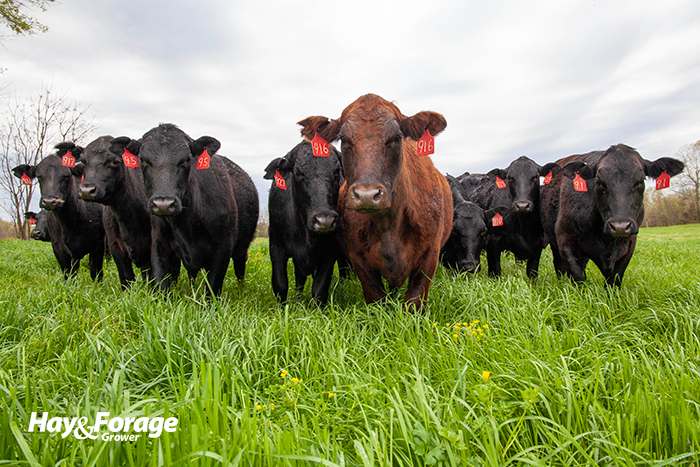
Controlling feed costs is often the shortest and most meaningful road to beef cow profitability. This often entails an extension of the grazing season to limit supplemental feeds and their associated labor costs.
Strategies to extend the number of grazing days in a season are well documented, and one of the more popular and effective practices is to incorporate winter annual cereals and/or ryegrass into a grazing plan. These forages easily meet or exceed the nutritional requirements of most livestock, regardless of their stage of production.
“Winter annuals can provide an alternative use for cover crops in rotation systems with potential weight gains of 2 pounds per day when managed for optimal forage growth and quality,” notes Jennifer Tucker, a beef nutrition and forage specialist with the University of Georgia. “Grazing initiation will be dependent on factors such as the species mixture and stage of growth.”
Tucker says that mixtures with cereal rye provide some of the earliest grazing; however, the efficiency of grazing rye is highly dependent on its stage of maturity. Once cereal rye reaches the head stage, the quality of grazeable forage drops significantly, and livestock will often refuse to graze it. Conversely, annual ryegrass provides multiple opportunities for grazing, but the timeline of forage availability begins much later in the winter than cereal rye.
“Research studies from across the Southeast report that mixtures of early and late maturating species can provide the greatest extension of grazing, and the inclusion of annual ryegrass can often provide an additional month or longer to the season,” Tucker reports. “A common mixture utilized in Georgia is cereal rye, annual ryegrass, and perhaps annual clover. Forage availability is often dependent on the initial planting date and method, which will influence the timeline of useable forage and the number of grazing events.”
Grazing winter annuals too early will limit stand performance and longevity, but grazing them too late hinders forage quality. Tucker says a good rule of thumb is to initiate grazing of winter annuals once the flag leaf stage is reached. Implement rotational, strip, or limit grazing to stretch the forage supply.
Further considerations
If late fall and early winter grazing is desired, Tucker suggests planting winter annuals in a prepared seedbed, either as a component of a crop rotation or as a dedicated winter annual paddock. Plant on the early end of the recommended planting window when seedbed conditions and weather have the best chance of being ideal.
If the plan is to have forage for both late fall/early winter and late winter/early spring grazing, do not graze the forage too early and avoid overgrazing. Late fall/early winter grazing will often be limited, depending on the species planted and planting date. When grazing in the late fall/early winter, Tucker says to maintain a minimum 3-inch stubble height to help maintain plants for late winter and early spring grazing.
When overseeding winter annuals into a perennial warm-season sod, don’t expect any late fall or early winter grazing. This is because overseeding typically occurs a month later than conventional plantings.
For annual ryegrass seeded into bermudagrass, begin intense grazing before green up of the dormant bermudagrass. This is done so that bermudagrass growth isn’t slowed in the spring.
When utilizing winter annuals in an integrated crop-livestock system, full utilization of late-maturing grass species such as annual ryegrass or wheat will delay row-crop planting. For this reason, Tucker suggests selecting earlier maturing varieties that can maximize their growth before it is time to plant the row crop.

